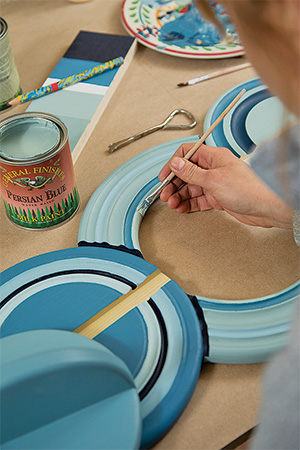
Is there a way to make paint look better on a finished item? I use latex house paint on the craft projects we use for woodworking days at the local Veterans Administration home; I use spray paint from a can on small projects and acrylic paint on some craft projects. For many of these, the paint finish matches the quality of the project and budget, but sometimes I would like to make the project look a bit better. Do you have any recommendations? – Keith Deck
Chris Marshall: Keith, here’s where seeing your painted projects firsthand would really help. Without a visual reference, I’m not sure what you mean by “better” here. Are you having a problem laying the paint down smoothly with a brush or rattle can? Then maybe your brushing or spraying technique needs more practice, or maybe the raw wood needs more surface preparation at the preliminary sanding stage. (In other words, don’t skip grits, and sand thoroughly up to 150- or 180-grit.) Are you priming the wood after sanding it? Because a painted finish needs primer. Without it, the wood will soak in more paint than it should and continue to look dry. Any pitch surrounding knots could bleed through the paint, too, unless you seal them in with a barrier coat of primer or shellac. Maybe your choice of paint sheen is the problematic issue here. If you’re using a glossy paint, that’s going to show more imperfections in the project’s construction and wood itself than would a duller flat, eggshell or satin sheen. I’m not sure I’m offering any help whatsoever here, but as you can see, “better” could depend on several variables.
Tim Inman: The better the surface preparation prior to painting, the better the paint looks when you’re done. Often, a clear coat over the paint will enhance the look. Gloss/shiny for new, flat or satin to make it look older. The clear coat will always make the paint look deeper and richer.





